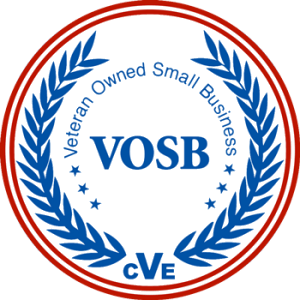How GEBs & PoE Devices Can Reduce Energy Costs and Unlock Savings for Government Agencies
Grid-interactive efficient buildings (GEBs) are designed to reduce energy costs by managing energy usage at peak times for electricity costs. There are different levels of grid-interactive efficient buildings, and the most high-tech versions use on-site storage (batteries) to help lower the costs of electricity when the building is occupied during the day when electricity generally costs the most. The batteries are typically recharged at night when usage costs are lower.
This guide will focus on how Power over Ethernet (PoE) devices can help achieve the energy efficiency that will be part of grid-interactive efficient buildings.
Connected & Smart Buildings
PoE devices connect low-power electronics such as lights, ceiling fans, and thermostats to foster greater control using remote software. PoE is designed to save electricity by personalizing and customizing a facility’s power distribution. This connectivity allows the building to be flexible not just within the building but also with the power grid.
Power over Ethernet devices also utilize analytics to optimize the lighting of the building. Studies have shown that the more lighting controls there are, the better energy savings. Two floors of the Time-Warner Center were retrofitted with advanced lighting controls that saved the building 56% on lighting costs and achieved a three-year return on investment. The New York Times Building saw a 24% overall energy savings using advanced lighting devices such as PoE.
Every building is unique and different. But the lighting energy savings alone will pay for the upgrades over time. The larger your facility, the more money you could save. PoE uses much lower energy levels at just 57 volts maximum with direct current versus 120 or 277 volts alternating current using traditional electrical wires.
Where PoE Fits Into GEBs
Department of Energy (DoE) goals include tripling energy efficiency and demand flexibility in residential and commercial buildings by 2030 relative to 2020 levels. PoE systems are one piece of this puzzle. Buildings are responsible for more than 70% of electricity consumption in the United States, and GEBs stand to save up to 29% of energy consumption at the facility level.
You’ll need smart building infrastructure installed during the planning phase of moving to GEB standards. Minimally, PoE lighting is controlled through Ethernet cables rather than traditional wiring. You can also adopt PoE protocols for ceiling fans, sensors, HVAC thermostats, VoIP phones, security cameras, digital signage, some laptops, high-performance WAPs, security card readers, intercoms, and IP clocks.
If there is a device in your building that uses 90 Watts of power or less under normal operating conditions, it has the potential to run on PoE cabling. You’ll need a plan to adopt PoE devices if you’re moving towards GEB adoption at some point in the future.
GEBs Collectively Improve Across Wide Swaths of Buildings
PoE devices can help you optimize your electrical usage across an entire campus. From a sprawling military base to a large public university, facilities can save money using connected buildings that can work in conjunction with each other to form their own miniature power plant.
Let’s say one building needs more power than another during a particular time of day. Using Ethernet cables and connectivity, the batteries used in GEBs can send power to the other side of campus without even tapping into an electrical grid at peak times. If there is any extra power, you can send it back to the energy grid that power companies would pay for.
Prepare for GEB Adoption With PoE Devices
Partnering with a PoE and smart building expert like CKC Data Solutions can prepare your facility for grid-interactive efficient buildings if federal buildings must meet these standards by 2030. Some states might adopt GEB standards at some point as well. We can also help commercial buildings move towards this standard that makes buildings more resilient during grid fluctuations, power outages, and extreme weather.
Call (417) 812-5251 or contact us for a consultation.





